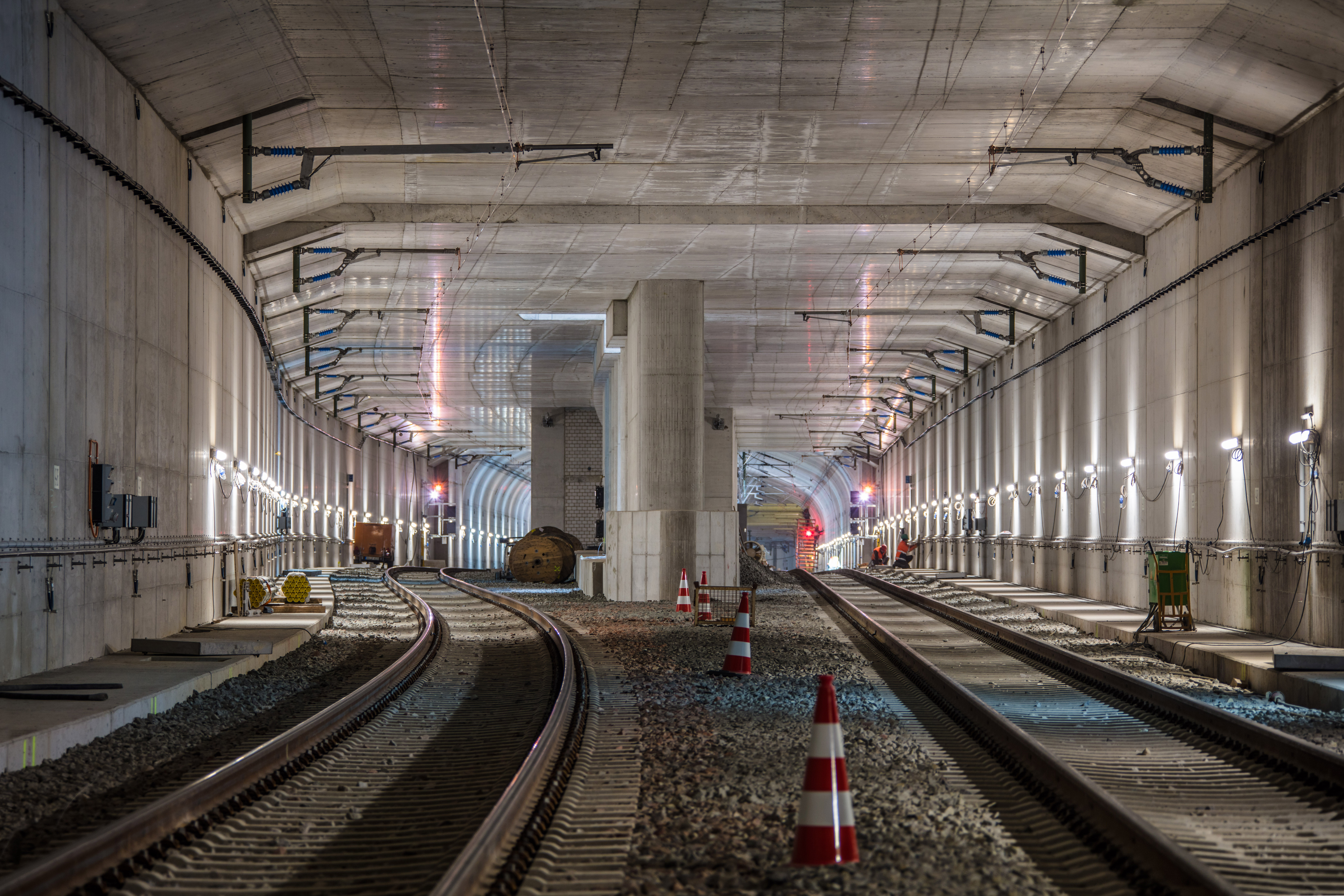
Infrastructure design for a major urban rail extension
Designing Robust High-Performance Track Configurations for New Rail Services
For a new, highly frequented urban transit hub, DB E.C.O. North America developed optimized, cost-effective station layouts and track concepts capable of accommodating up to 12 trains per hour in both directions. Through rigorous dynamic modeling and by assessing robustness and response to service interruptions, our work ensures that the transit center is strategically positioned for efficient rail operations, offering passengers a reliable and convenient transportation experience.
Challenge
Our client, a major urban rail infrastructure owner, has been building a new regional transit hub. The hub integrates regional and long-distance bus, rapid transit, and metro service. In a second phase an existing commuter rail line will be extended and integrated with a new high-speed rail service leading to the city center via a tunnel into an underground station. Our team was asked to identify the necessary infrastructure configuration to accommodate between 6 and 12 trains every hour in both directions efficiently and cost-effectively, while ensuring high service quality and customer satisfaction (convenience, connectivity, etc.).
Approach
DB E.C.O. North America developed and implemented a two-step process to identify and validate the infrastructure needs based on the future service vision. The first step involved developing planning parameters, identifying long-term infrastructure requirements at stations and in the tunnel, and defining the phasing based on different service levels. In the second step the proposed plans were tested for robustness by performing dynamic simulations and conducting contingency planning for potential service interruptions.
Results
DB E.C.O. North America developed improved station configurations that streamlined the track system between key points, supporting stable operations for up to 12 trains hourly in both directions, while minimizing capital costs.



